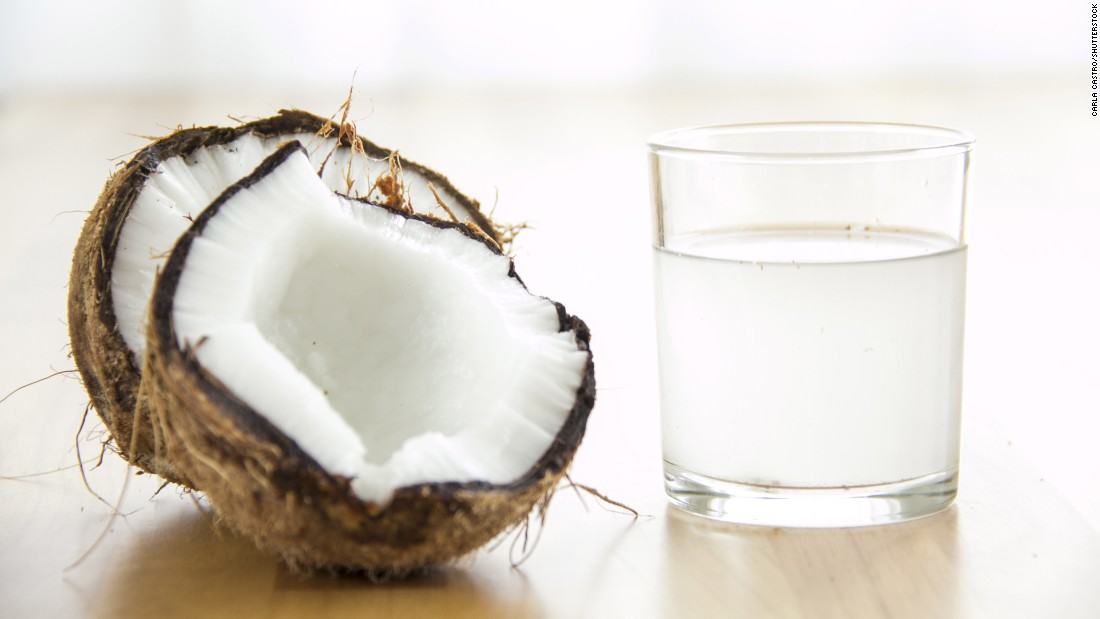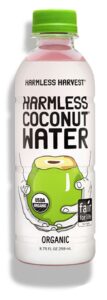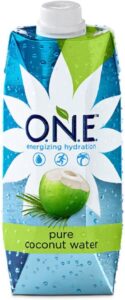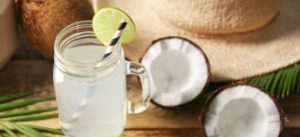 Coconut water is the new wave in health drinks, and a great natural alternative to sports drinks (which usually contain some type of refined sugar). The clear water inside of young coconuts has been revered as a natural source of nutrition, wellness, and hydration for more than 4,000 years. It is full of minerals and natural electrolytes, and has long been a staple drink in the tropics, where coconuts grow, especially in Southeast Asia, the Pacific Islands, Africa, and the Caribbean. Last year on my vacation to Hawaii, I went to the farmer’s market, where the local coconut farmers had truckloads of young coconuts to sell especially for drinking the coconut water out of. They would cut off the tops, insert a straw, and then you could walk around the farmer’s market holding a big coconut and sipping on yummy, slightly sweet coconut water.
Coconut water is the new wave in health drinks, and a great natural alternative to sports drinks (which usually contain some type of refined sugar). The clear water inside of young coconuts has been revered as a natural source of nutrition, wellness, and hydration for more than 4,000 years. It is full of minerals and natural electrolytes, and has long been a staple drink in the tropics, where coconuts grow, especially in Southeast Asia, the Pacific Islands, Africa, and the Caribbean. Last year on my vacation to Hawaii, I went to the farmer’s market, where the local coconut farmers had truckloads of young coconuts to sell especially for drinking the coconut water out of. They would cut off the tops, insert a straw, and then you could walk around the farmer’s market holding a big coconut and sipping on yummy, slightly sweet coconut water.
Throughout history, coconut water has been used to prevent and treat dehydration. The value of coconut water is due mainly to its perfect balance of electrolytes – namely potassium, sodium, magnesium, calcium, and phosphorus. The balance of these electrolytes in coconut water is the same balance that we have in our human blood. What’s even more amazing is that coconut water inside of undamaged coconuts is sterile, and has been used as an intravenous hydration fluid in some developing countries where medical saline was unavailable. During the Pacific war of 1941 to 1945, both sides in the conflict regularly used coconut water in place of blood transfusions, because there was not enough donor blood available. It’s the only natural substance that can be safely injected into the human blood stream. Perhaps this is why coconut water has long been called “the fluid of life”.
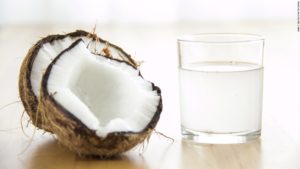 A typical serving of coconut water has 569 mg of potassium – 15 times more than most sports drinks – and more potassium than a large banana. Coconut water is sold mainly in natural food markets, and is packaged in cans, tetra paks, or bottles. But the best coconut water is fresh from the young coconut.
A typical serving of coconut water has 569 mg of potassium – 15 times more than most sports drinks – and more potassium than a large banana. Coconut water is sold mainly in natural food markets, and is packaged in cans, tetra paks, or bottles. But the best coconut water is fresh from the young coconut.
Young coconuts are not the hard, brown, furry coconuts most people are familiar with. Those are mature coconuts, that have a little bit of water inside and the coconut “meat” is somewhat hard as well. Young coconuts are green on the outside, and have a good amount of water inside. The “meat” or “flesh” inside is soft, almost like pudding. They are usually sold in natural food markets or Asian markets. You might not recognize them, as the outer green husk has been ground down with a flat spot on the bottom and a point on the top. They are usually wrapped in plastic. You can cut them open at the top with a meat cleaver (three or four chops to make a circle). You can then insert a straw to drink the water, or just pour it into a glass.

